Museum "Auto-USSR" Michael Krasintsa (35 photos)
 Bashny.Net
Bashny.Net
Excellent tour of the museum, which collects the car Soviet automobile industry. Directly under the open sky. Although over, the museum in the true sense of the word Nazan this place easily.
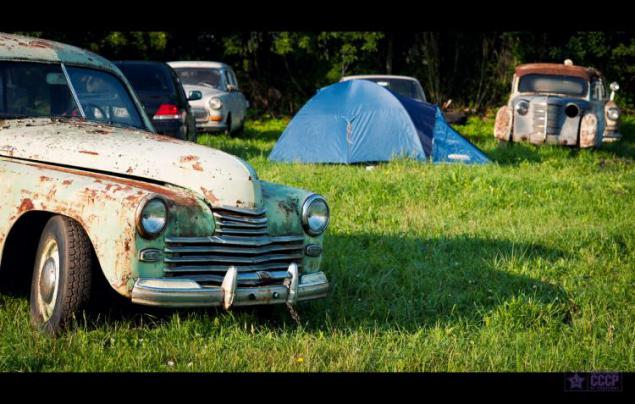
First I walked all avtokollektsiyu on the main field and in the yard. Mikhail appeared to constantly optimize the balance of their cars, moving them back and forth, gathering in rows by brand, year, color or the same slave status. Cars "roam" on the grounds, among them there are also newly arrived items.
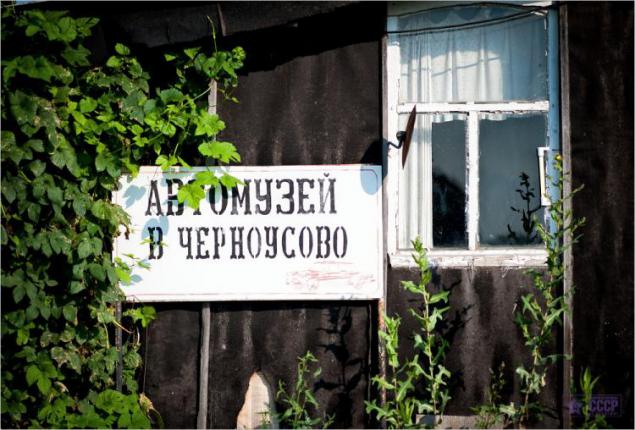
The modest sign on the "house-museum". House - because I live there Mikhail and his wife, dog and cat. A museum - because the sign about the museum.
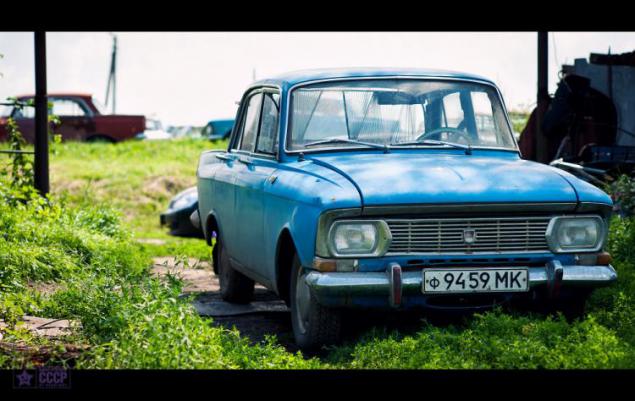
And here is the proprietor autotravel came from a neighboring village. He Says - drove in the last of his money to buy the latest issue of the magazine "Avtolegendy USSR", who arrived in the mail, and almost did not go back for non-payment. Voyazhiroval Mikhail here on this, the blue brainchild AZLK with long disused number signs. Moscow Lenin Komsomol Automobile Plant has mastered the model "412" in 1967. The same car was produced on "Izhmash". Already before 1997. In Bulgaria's sister "four hundred and twelfth" serially collected from Soviet parts. The export version of the "412" model called the Moskvitch-Elite 1500.

The car "Moskvich-426" was captured in the guest book one of the visitors and friends of Michael Krasintsa.
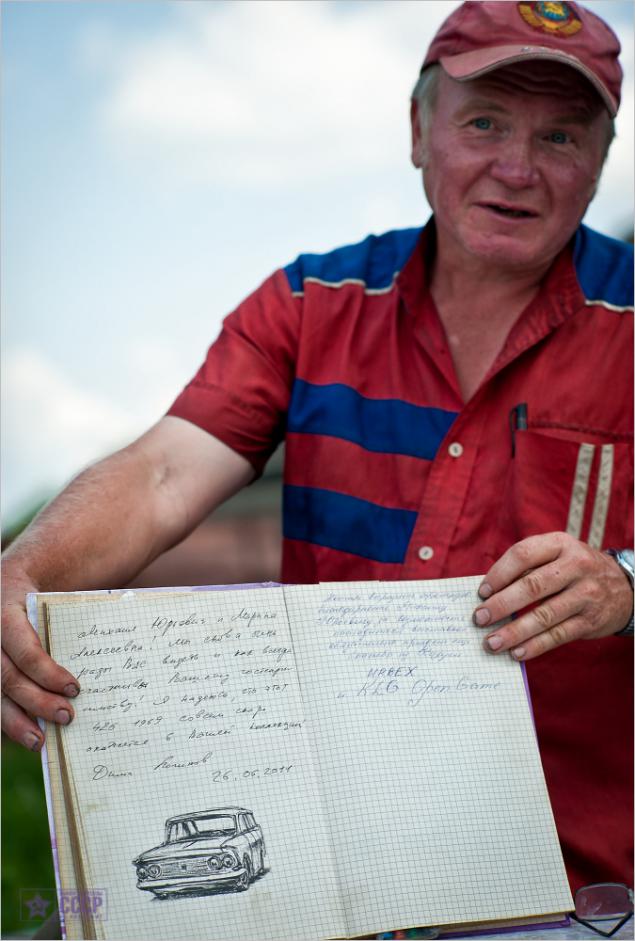
In the backyard of the museum, next to the cliff lined up in the ticker representatives of well-known and well-deserved family, "the twenty-first." Closer to us - 4 car "Volga" GAZ-21 of the second series with the radiator grille of the "shark mouth". The last three cars - the "Volga" the first series, the GAZ-21B with a "star».

Unidentified dvuhkabinny GAS. From the newly arrived items. Can you help him correctly identify?

GAZ M-72. Crossover? This car, of course, is very similar to GAZ M-20 "Victory", but it is not, and in common with the M-20 is not too much. In the postwar years the USSR national economy is experiencing an acute need for a machine that would be able to combine the best qualities of the jeep (or rather all-terrain vehicle, a jeep or SUV words in those days did not know) and city car. It was decided to "cross" the obsolete army four-wheel drive all-terrain vehicle GAZ-69 and "victory." The equipment of the new body-wheel drive vehicle was the same as the trasyy.livejournal.com/749164.html#cutid1у M-20: soft upholstery, heater, clock, dual-band (long and medium wave) radio. Given the need to work on a dirt road, on M-72 for the first time in the USSR it was applied windscreen washer - a mechanical pump, powered by pressing a special foot pedal. On the radiator grille with the logo set the label M72-like logo and decorated the hood of the car.
Road tests of the prototype M-72 showed its high permeability and handling characteristics. The car was moving steadily through the muddy rough roads, on the sand, plowing, snow-covered terrain, taking the ups up to 30 degrees. Due to the streamlined body on the highway speed reached 100 km / h, while fuel consumption was less than the GAZ-69. By February 1955 the prototype took place more than 40 thousand kilometers, which made it possible to identify some of the weaknesses and eliminate the defects. In May, the car tested in the mountains of the Crimea, and in June started the mass production of the M-72 on gas. M-72 has become the world's first all-wheel drive car with frameless (carrying) body and released in 1955-1957 in the amount of 4677 copies.
M-72 has been well received by rural drivers and made us take a fresh look at the idea of a jeep. M-72 appeared in places where has never been any one car: the mountain passes, in the forest, crossing the dangerous fords and the like. Small issue would not allow GAZ M-72 purchase fame comparable to GAZ-69, however, evaluating the M-72 on a global scale, it can be argued that for the time of release, he was at the level of world analogues, and in many ways ahead of them . With the completion of the issue of GAZ-M20 "Victory" and ceased production of GAZ-M72.
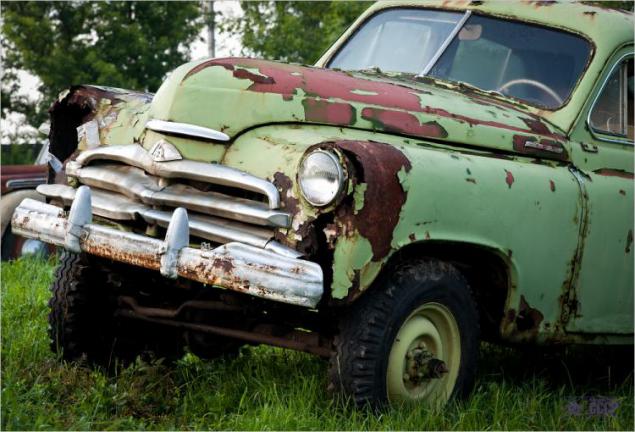
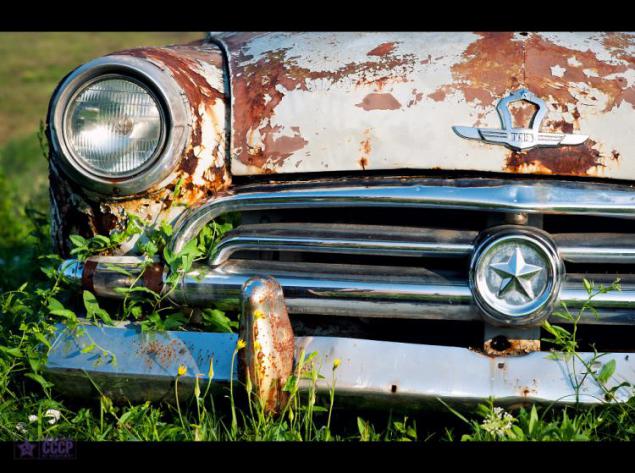
The famous deer chrome, paint on the hood of the "Volga" car disappeared from the later series, with cars designed to work in a taxi cab company and export models. Beautiful sweeping figure could severely injure a pedestrian, "podsazhennogo" on the hood in an accident. Choosing a metal emblem was due to the presence of deer on the arms of Nizhny Novgorod, then - Gorky. Over the years, the release-figure mascot could be particularly small. Along with the deer nakapotnym installed and a longitudinal cast molding. Nowadays, deer - an extra headache for car owners, retromanov: The original figure is in good condition (or Novodel) is not less than $ 200 (for a new original assembly may be asked to 300-500 USD) and therefore attracts unwanted attention and knowledgeable people just stupid podrostkov- "deer", seeking to break off all that is possible.

The famous deer chrome, paint on the hood of the "Volga" car disappeared from the later series, with cars designed to work in a taxi cab company and export models. Beautiful sweeping figure could severely injure a pedestrian, "podsazhennogo" on the hood in an accident. Choosing a metal emblem was due to the presence of deer on the arms of Nizhny Novgorod, then - Gorky. Over the years, the release-figure mascot could be particularly small. Along with the deer nakapotnym installed and a longitudinal cast molding. Nowadays, deer - an extra headache for car owners, retromanov: The original figure is in good condition (or Novodel) is not less than $ 200 (for a new original assembly may be asked to 300-500 USD) and therefore attracts unwanted attention and knowledgeable people just stupid podrostkov- "deer", seeking to break off all that is possible.

With MZ-3D. Double four-wheel vehicle, microcar Serpukhov plant SMZ. The people - "invalidkoy." Disabled persons issued free of charge. After two years and six months of operation disabilities receive a free repair "invalidkoy" then used this mount another two and a half years. As a result, he was obliged to hand over microcar in social security and get a new one. Recent instances of the C-300 3D SeAZ left in autumn 1997.

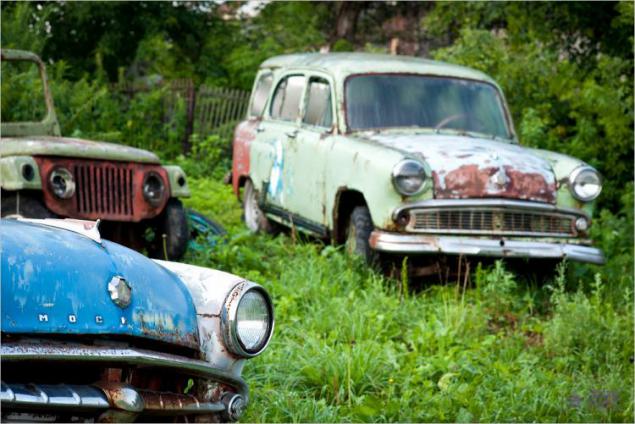
Passenger car "Moskvich - 423" with a versatile cargo-body. Created on the basis of "Moskvich-407". The five-door. Basically - "civil servant", ordinary citizens sold with a big "squeak". Equipped with dual-band radio receiver. Equipped with tubeless tires.

GAZ M-20 "Victory". One of the "victims of the fire».
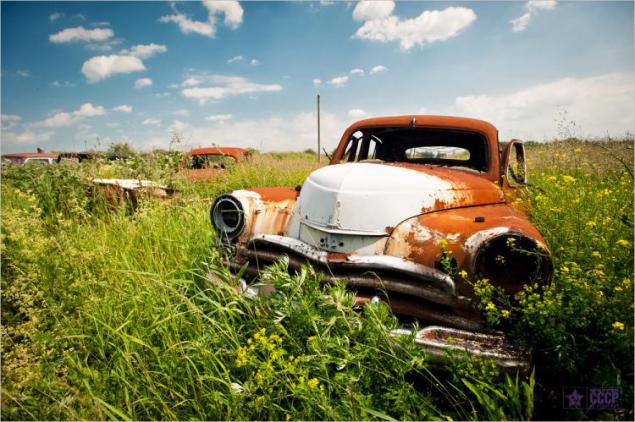
A typical "box" on the hood of "Moskvich" production MZMA.

GAZ M-20 "Victory". The interior of the clock. Somehow, in the Soviet cars from the environment very quickly goes down, literally spilling steering wheel.
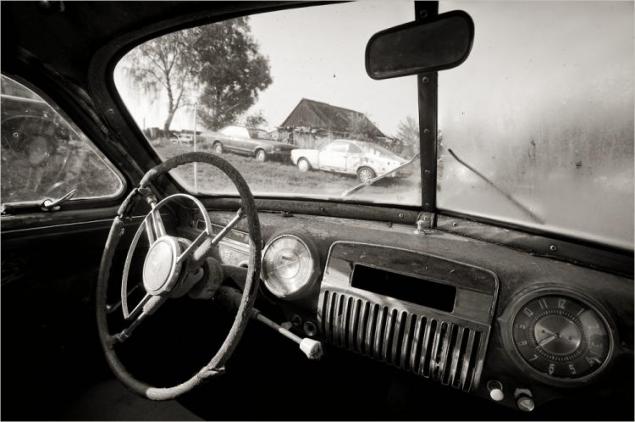
GAZ-21B "Volga". In March 1955 at the Gorky Automobile Plant assembled the first prototype of a new car GAZ-21 "Volga", and already 13 October 1956 were collected the first three series of "Volga". Machines first issue is easily recognized by the large chromed five-pointed star on the radiator grille.

Wheelchair unidentified Soviet motorcycle. Most likely - something very common, just in motorcycles I understand poorly.
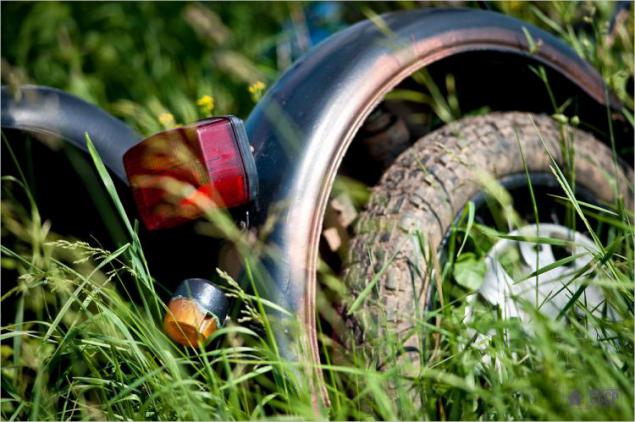

GAZ-13

The emblem of the Moscow plant of small cars on the hood "Moskvich».
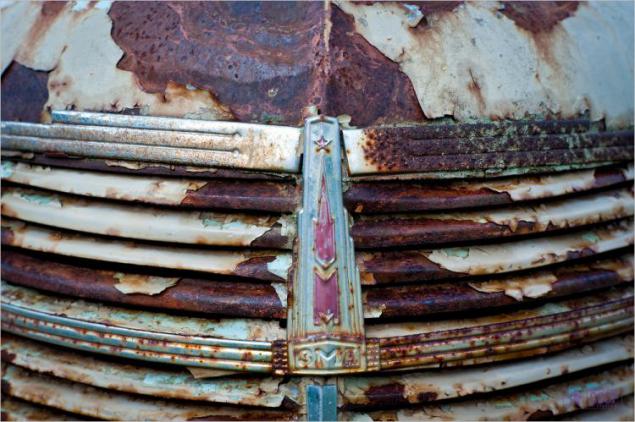
In the village Chernousovo Tula region. Summer 2011.
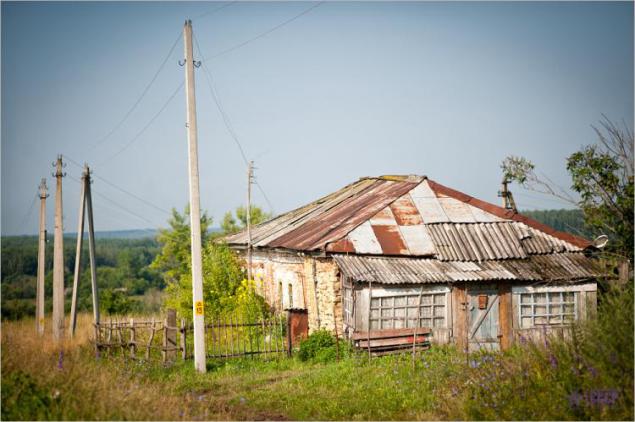
Body "Moskvich-415". Car small class terrain, develop factory MZMA in Moscow in the years 1950-1960 on the basis of a stock car "Moskvich". The series did not go. Without frame.
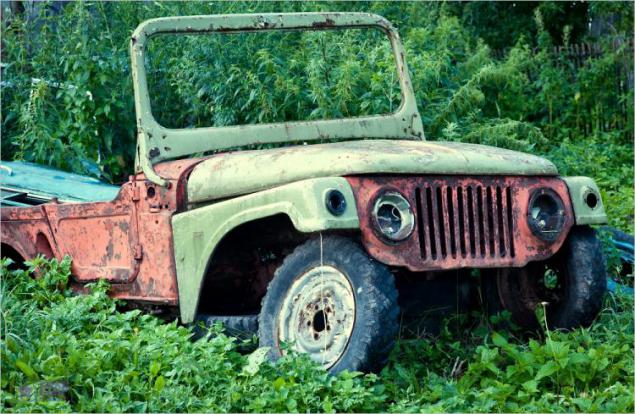
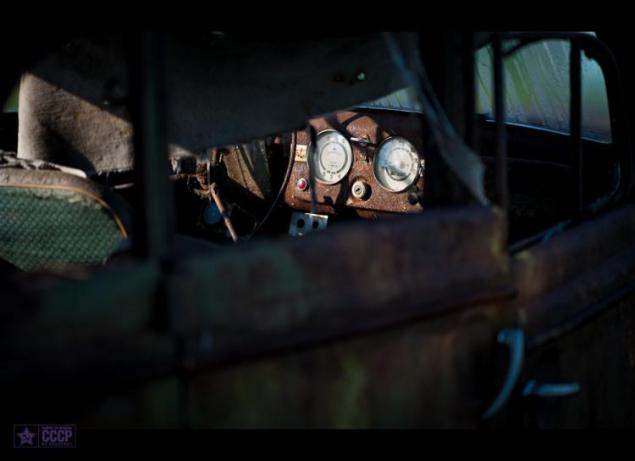
SMZ S-3A. "Morgunovka." Microcar for the disabled. With motorcycle speedometer. Maximum speed - 60 km \ h, but the speedometer is graduated up to 120! They say that the folding fabric top and two doors allow this machine formally classified as a "roadster". Issued more than 200,000 copies.
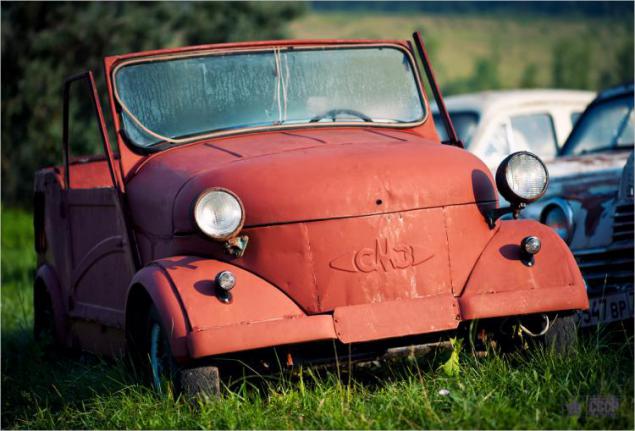
In the center - a fragment wagon - "Moskvich-411", with the body on the model of the "Moskvich-423N." Issued in 1515 copies. Rarity. Rots.

"Moskvich-400-420". The first number - the model of the engine, the second - a modification of the body. He descended from the conveyor 4 December 1946. I do not have cabin heater. It produced until 1954. There were produced about 250,000 vehicles of this family all modifications. The cost of such a car was 9 th. Pre-reform rubles, which was 7 th. Rubles less than the cost of the "Victory".
In addition to presenting a picture car with a body type "sedan", MZMA released in 1949-1952 years "Muscovites" - 400-420A in the back of a convertible with a canvas roof slides down. Tilt was not very durable in operation, torn, grind, water flows into the interior, because from a practical Soviet avtonaseleniya repute not courted. The most "rukastogo" motorists "collective farm" their leaky cars navarivaya to "convertibles" self-made metal roofs. All were released less than 18 thousand copies of "convertible" and survived until today and did very few.

GAZ-13 "Chaika" and GAZ-12 ZIM in the background. Solid car class. Very beautiful, unusual. The official date of the beginning of production of GAZ-13 "Chaika" was January 16, 1959, but in fact the first cars going on the stocks in autumn 1958. The first cars had issued a number of minor differences from the next, like the other location the inscription "The Seagull" back.

In the next few years, "The Seagull" repeatedly exhibited at the automotive and industrial exhibitions abroad, including in the cities of Brno, Budapest, Geneva, New York, Leipzig and Mexico City. In New York City on the Soviet Exhibition 1959 (response to the American exhibition in the Soviet Union the same year) was presented monochrome "The Seagull" (most likely - black), but with a characteristic two-color machine cabin (with a scarlet cloth upholstery, which had a "chess "pattern). For several years, the two-tone burgundy-beige "The Seagull" was exhibited at the Exhibition of Economic Achievements in the pavilion "Engineering».
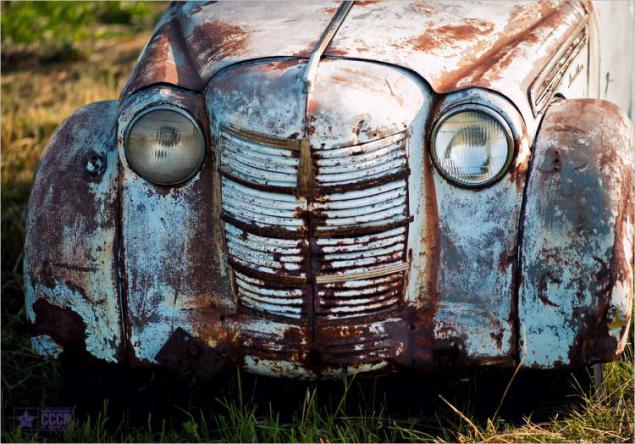
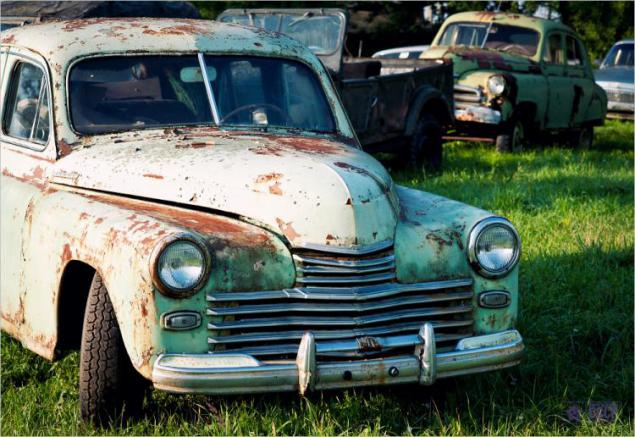
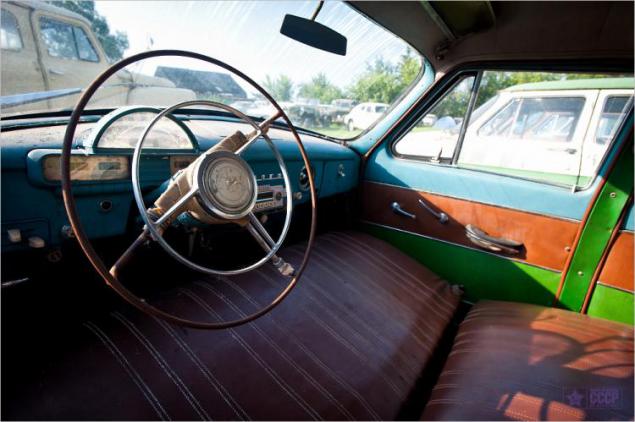
Cars "Moskvich" of different modifications.

Tow truck "Bolivar" based on the "Moskvich-2140". This curious pick-released in a single copy, for the needs of the factory team AZLK. Of the features: dual rear wheels and lift the crane that allowed towed suspended for front or rear of the defective car. Unicum.
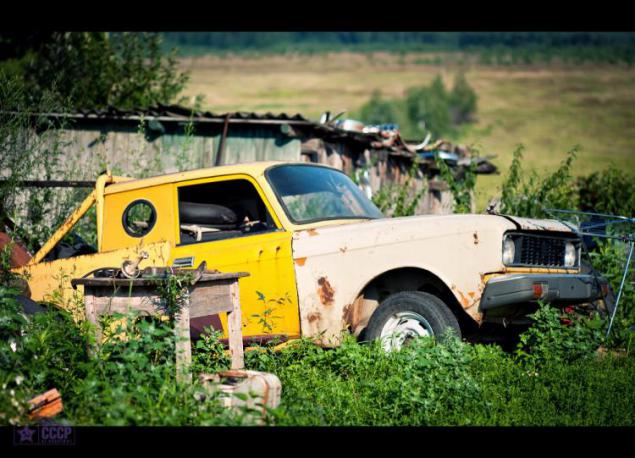
GAZ M-20 "Victory". One of the most famous Soviet postwar cars. It was developed in KB Gorky Automobile Plant during World and February 3, 1943 the chief designer of GAZ Lipgart reported on the design of the car with the provisional name of GAZ-20. The car was in many ways a "revolutionary": immediately catches the eye shape of the body, the lack of protruding wings and running boards. In July 1945, the new car has been demonstrated in the Kremlin, Stalin. Stalin's attitude to the car was skeptical. When asked to approve the name of the offspring was said, "are small victory, but let it be" Victory ". And it was not only a phrase, say "leader" in the address of the new car. After a four-hour drive all the way silent Stalin came out of the "Victory", said: "It is not good, but it will come down».

- A source

First I walked all avtokollektsiyu on the main field and in the yard. Mikhail appeared to constantly optimize the balance of their cars, moving them back and forth, gathering in rows by brand, year, color or the same slave status. Cars "roam" on the grounds, among them there are also newly arrived items.

The modest sign on the "house-museum". House - because I live there Mikhail and his wife, dog and cat. A museum - because the sign about the museum.

And here is the proprietor autotravel came from a neighboring village. He Says - drove in the last of his money to buy the latest issue of the magazine "Avtolegendy USSR", who arrived in the mail, and almost did not go back for non-payment. Voyazhiroval Mikhail here on this, the blue brainchild AZLK with long disused number signs. Moscow Lenin Komsomol Automobile Plant has mastered the model "412" in 1967. The same car was produced on "Izhmash". Already before 1997. In Bulgaria's sister "four hundred and twelfth" serially collected from Soviet parts. The export version of the "412" model called the Moskvitch-Elite 1500.

The car "Moskvich-426" was captured in the guest book one of the visitors and friends of Michael Krasintsa.

In the backyard of the museum, next to the cliff lined up in the ticker representatives of well-known and well-deserved family, "the twenty-first." Closer to us - 4 car "Volga" GAZ-21 of the second series with the radiator grille of the "shark mouth". The last three cars - the "Volga" the first series, the GAZ-21B with a "star».

Unidentified dvuhkabinny GAS. From the newly arrived items. Can you help him correctly identify?

GAZ M-72. Crossover? This car, of course, is very similar to GAZ M-20 "Victory", but it is not, and in common with the M-20 is not too much. In the postwar years the USSR national economy is experiencing an acute need for a machine that would be able to combine the best qualities of the jeep (or rather all-terrain vehicle, a jeep or SUV words in those days did not know) and city car. It was decided to "cross" the obsolete army four-wheel drive all-terrain vehicle GAZ-69 and "victory." The equipment of the new body-wheel drive vehicle was the same as the trasyy.livejournal.com/749164.html#cutid1у M-20: soft upholstery, heater, clock, dual-band (long and medium wave) radio. Given the need to work on a dirt road, on M-72 for the first time in the USSR it was applied windscreen washer - a mechanical pump, powered by pressing a special foot pedal. On the radiator grille with the logo set the label M72-like logo and decorated the hood of the car.
Road tests of the prototype M-72 showed its high permeability and handling characteristics. The car was moving steadily through the muddy rough roads, on the sand, plowing, snow-covered terrain, taking the ups up to 30 degrees. Due to the streamlined body on the highway speed reached 100 km / h, while fuel consumption was less than the GAZ-69. By February 1955 the prototype took place more than 40 thousand kilometers, which made it possible to identify some of the weaknesses and eliminate the defects. In May, the car tested in the mountains of the Crimea, and in June started the mass production of the M-72 on gas. M-72 has become the world's first all-wheel drive car with frameless (carrying) body and released in 1955-1957 in the amount of 4677 copies.
M-72 has been well received by rural drivers and made us take a fresh look at the idea of a jeep. M-72 appeared in places where has never been any one car: the mountain passes, in the forest, crossing the dangerous fords and the like. Small issue would not allow GAZ M-72 purchase fame comparable to GAZ-69, however, evaluating the M-72 on a global scale, it can be argued that for the time of release, he was at the level of world analogues, and in many ways ahead of them . With the completion of the issue of GAZ-M20 "Victory" and ceased production of GAZ-M72.


The famous deer chrome, paint on the hood of the "Volga" car disappeared from the later series, with cars designed to work in a taxi cab company and export models. Beautiful sweeping figure could severely injure a pedestrian, "podsazhennogo" on the hood in an accident. Choosing a metal emblem was due to the presence of deer on the arms of Nizhny Novgorod, then - Gorky. Over the years, the release-figure mascot could be particularly small. Along with the deer nakapotnym installed and a longitudinal cast molding. Nowadays, deer - an extra headache for car owners, retromanov: The original figure is in good condition (or Novodel) is not less than $ 200 (for a new original assembly may be asked to 300-500 USD) and therefore attracts unwanted attention and knowledgeable people just stupid podrostkov- "deer", seeking to break off all that is possible.

The famous deer chrome, paint on the hood of the "Volga" car disappeared from the later series, with cars designed to work in a taxi cab company and export models. Beautiful sweeping figure could severely injure a pedestrian, "podsazhennogo" on the hood in an accident. Choosing a metal emblem was due to the presence of deer on the arms of Nizhny Novgorod, then - Gorky. Over the years, the release-figure mascot could be particularly small. Along with the deer nakapotnym installed and a longitudinal cast molding. Nowadays, deer - an extra headache for car owners, retromanov: The original figure is in good condition (or Novodel) is not less than $ 200 (for a new original assembly may be asked to 300-500 USD) and therefore attracts unwanted attention and knowledgeable people just stupid podrostkov- "deer", seeking to break off all that is possible.

With MZ-3D. Double four-wheel vehicle, microcar Serpukhov plant SMZ. The people - "invalidkoy." Disabled persons issued free of charge. After two years and six months of operation disabilities receive a free repair "invalidkoy" then used this mount another two and a half years. As a result, he was obliged to hand over microcar in social security and get a new one. Recent instances of the C-300 3D SeAZ left in autumn 1997.


Passenger car "Moskvich - 423" with a versatile cargo-body. Created on the basis of "Moskvich-407". The five-door. Basically - "civil servant", ordinary citizens sold with a big "squeak". Equipped with dual-band radio receiver. Equipped with tubeless tires.

GAZ M-20 "Victory". One of the "victims of the fire».

A typical "box" on the hood of "Moskvich" production MZMA.

GAZ M-20 "Victory". The interior of the clock. Somehow, in the Soviet cars from the environment very quickly goes down, literally spilling steering wheel.

GAZ-21B "Volga". In March 1955 at the Gorky Automobile Plant assembled the first prototype of a new car GAZ-21 "Volga", and already 13 October 1956 were collected the first three series of "Volga". Machines first issue is easily recognized by the large chromed five-pointed star on the radiator grille.

Wheelchair unidentified Soviet motorcycle. Most likely - something very common, just in motorcycles I understand poorly.


GAZ-13

The emblem of the Moscow plant of small cars on the hood "Moskvich».

In the village Chernousovo Tula region. Summer 2011.

Body "Moskvich-415". Car small class terrain, develop factory MZMA in Moscow in the years 1950-1960 on the basis of a stock car "Moskvich". The series did not go. Without frame.


SMZ S-3A. "Morgunovka." Microcar for the disabled. With motorcycle speedometer. Maximum speed - 60 km \ h, but the speedometer is graduated up to 120! They say that the folding fabric top and two doors allow this machine formally classified as a "roadster". Issued more than 200,000 copies.

In the center - a fragment wagon - "Moskvich-411", with the body on the model of the "Moskvich-423N." Issued in 1515 copies. Rarity. Rots.

"Moskvich-400-420". The first number - the model of the engine, the second - a modification of the body. He descended from the conveyor 4 December 1946. I do not have cabin heater. It produced until 1954. There were produced about 250,000 vehicles of this family all modifications. The cost of such a car was 9 th. Pre-reform rubles, which was 7 th. Rubles less than the cost of the "Victory".
In addition to presenting a picture car with a body type "sedan", MZMA released in 1949-1952 years "Muscovites" - 400-420A in the back of a convertible with a canvas roof slides down. Tilt was not very durable in operation, torn, grind, water flows into the interior, because from a practical Soviet avtonaseleniya repute not courted. The most "rukastogo" motorists "collective farm" their leaky cars navarivaya to "convertibles" self-made metal roofs. All were released less than 18 thousand copies of "convertible" and survived until today and did very few.

GAZ-13 "Chaika" and GAZ-12 ZIM in the background. Solid car class. Very beautiful, unusual. The official date of the beginning of production of GAZ-13 "Chaika" was January 16, 1959, but in fact the first cars going on the stocks in autumn 1958. The first cars had issued a number of minor differences from the next, like the other location the inscription "The Seagull" back.

In the next few years, "The Seagull" repeatedly exhibited at the automotive and industrial exhibitions abroad, including in the cities of Brno, Budapest, Geneva, New York, Leipzig and Mexico City. In New York City on the Soviet Exhibition 1959 (response to the American exhibition in the Soviet Union the same year) was presented monochrome "The Seagull" (most likely - black), but with a characteristic two-color machine cabin (with a scarlet cloth upholstery, which had a "chess "pattern). For several years, the two-tone burgundy-beige "The Seagull" was exhibited at the Exhibition of Economic Achievements in the pavilion "Engineering».



Cars "Moskvich" of different modifications.

Tow truck "Bolivar" based on the "Moskvich-2140". This curious pick-released in a single copy, for the needs of the factory team AZLK. Of the features: dual rear wheels and lift the crane that allowed towed suspended for front or rear of the defective car. Unicum.

GAZ M-20 "Victory". One of the most famous Soviet postwar cars. It was developed in KB Gorky Automobile Plant during World and February 3, 1943 the chief designer of GAZ Lipgart reported on the design of the car with the provisional name of GAZ-20. The car was in many ways a "revolutionary": immediately catches the eye shape of the body, the lack of protruding wings and running boards. In July 1945, the new car has been demonstrated in the Kremlin, Stalin. Stalin's attitude to the car was skeptical. When asked to approve the name of the offspring was said, "are small victory, but let it be" Victory ". And it was not only a phrase, say "leader" in the address of the new car. After a four-hour drive all the way silent Stalin came out of the "Victory", said: "It is not good, but it will come down».

- A source
Tags
See also
Great shots, which the photographer managed to capture
Photos from the weddings of people who know how to have fun
Do you think ufologists mad?
Photos of vessels and ships that were dumped on the land due to the tsunami in Japan.
20 unique photos that shocked the world. From some of them blood run cold!
25 photos from around the world that will leave nobody indifferent
Photos Jake Olson, from which emanates the magic.
Underground bunker
The Maginot Line: underground shelter in the forests of Lorraine
You would not guess what kind of device ... Greetings from the past!

















